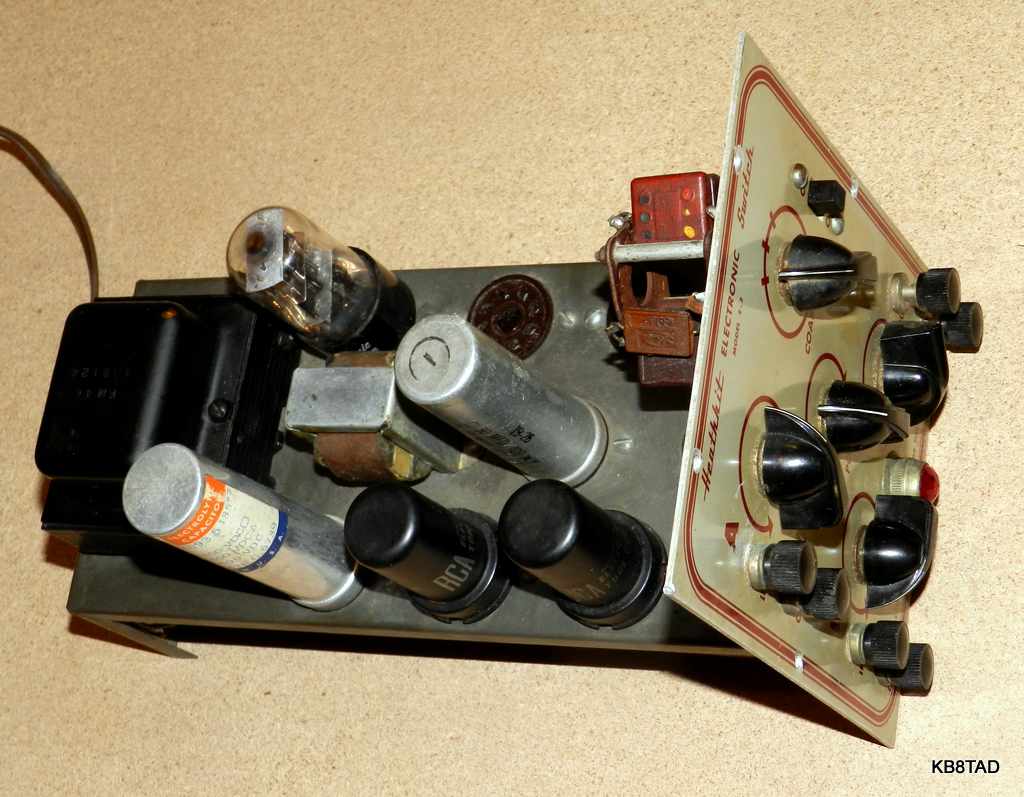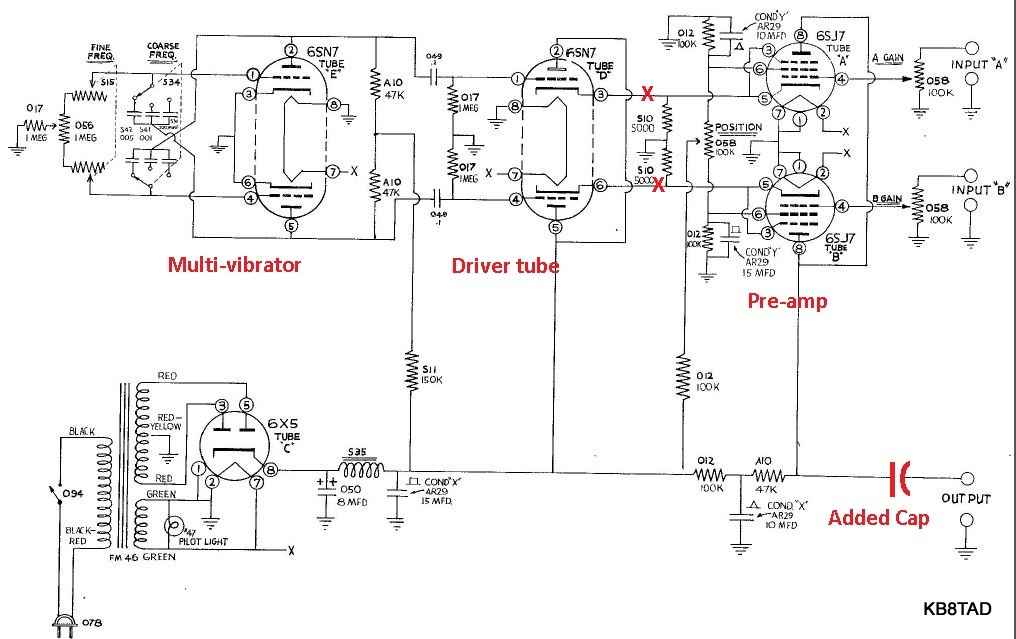The S-2 was Heath's second Electronic Switch. It was introduced in 1951 replacing Heath's S-1 introduced in 1948. Looking at the schematics for the two, it appears they are identical. Only the cabinet was changed.
But what's it good for?
An Electronic Switch was used in the days of early analog oscilloscopes to show two channel inputs at the same time on a scope display. It could, for example, show both the input and output of an amplifier at the same time, and even super-impose those displays. Any variation in the signals due to distortion would be obvious. Modern scopes usually have 2 or more channels built into the scope for just such comparisons.
Repairs
This was purchased at an auction. The very low price reflected its current usefulness. Bringing power up slowly with the 6X5 rectifier removed revealed that the pilot light was not working but one of the 6SN7 tubes showed a filament glow. Thinking that the bulb in the pilot light was burned out, I pulled it and checked for continuity. It was intact. Looking at the pilot light connections, one of the leads went as expected to the filament line. The other went to a ground lug on a tube socket. Checking carefully revealed a poorly soldered connection, typical in Heathkits. Tube socket ground lugs, because they contact the chassis, need more heat to properly melt solder. I re-soldered it and other questionable solder joints. That brought a glow to both 6SN7 tubes and the pilot light. Following up with a careful powering of the set with the rectifier installed revealed a leaky 8 MFD electrolytic that had been installed as a replacement under the chassis. The two aluminum shell electroltyics which appeared to be of later manufacture proved to be in good shape.
Re-purposing
In checking out the schematic, I noticed that the 6SJ7 pentode amplifiers were controlled by a multi-vibrator square-wave oscillator (6SN7) feeding a driver/ buffer (another 6SN7) by way of the cathodes.
The 6SJ7 amplifier pair had their screen grid voltage varied in fader fashion. The plates of the two 6SJ7 were combined, feeding the output terminal directly, complete with B+ on that terminal.
I installed a cap in series with that output lead. Pulling the two 6SN7 tubes disabled the oscillator function leaving just the two 6SJ7 amp tubes. Connecting an audio source while monitoring the output proved that the 6SJ7 pair made a very decent audio preamp. The output for the two can be separated or used as is for a mixer function or to combine two stereo channels to mono.

Further re-purposing?
With the 6SN7 pair removed and no longer drawing power, it occurred to me that a 6K6 audio output tube or possibly a 6V6 could be wired into one of the tube sockets and an audio output transformer added to make a nice utility audio amplifier. I have not yet tried that. The power transformer appears to have enough capacity to manage the current for at least a 6K6. Let me know if you have tried such a modification and how it turned out.

date:11-14-15
An Oregon Electronics A3A Regulated High Voltage Power Supply was the previous item on the bench.